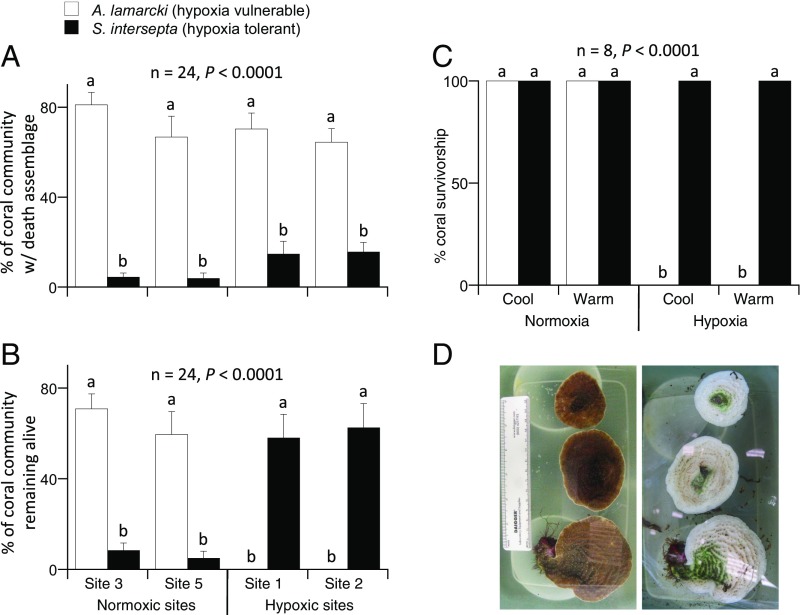Fig. 3.
Shifts in community structure toward hypoxia-tolerant coral species. (A) Before the hypoxic event, using the record of all corals both alive and dead as a proxy for relative abundance, the cover of Agaricia spp. was consistently higher than S. intersepta across all four sites, and there was no difference among sites in the cover of either taxon. (B) Following the hypoxic event, S. intersepta emerged as the dominant species among the corals remaining alive at the two sites that experienced hypoxia, whereas Agaricia spp. persisted as the dominant living coral at the two sites that did not experience hypoxia. (C) Subsequent laboratory tolerance experiments suggested that hypoxia, not thermal stress, was the primary driver of the mortality patterns in the field because S. intersepta had high survivorship across all treatments, and A. lamarcki (92% of Agaricia spp. at study sites) survivorship was affected by hypoxia but not by temperature treatment. Cool = 28 °C; warm = 32 °C; normoxic = >5 mg/L dissolved oxygen; hypoxic = 0.5 mg/L dissolved oxygen. (D) Photos of A. lamarcki on day 0 (Left) and day 7 (Right) of the cool, hypoxic treatment. Note green algae colonizing dead colonies on day 7. Data in A and B are mean (±SE) percent cover analyzed by ANOVA. Data in C are the proportion of replicate containers with surviving corals analyzed by Kaplan–Meier survivorship analysis. Different letters above bars indicate significant differences in percent cover and survivorship, respectively.

